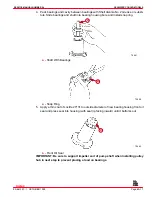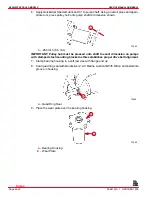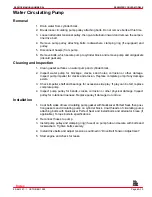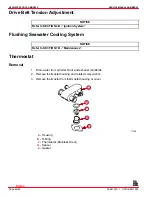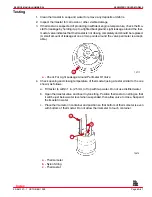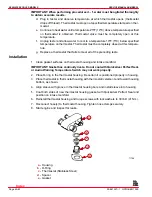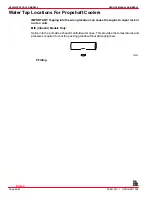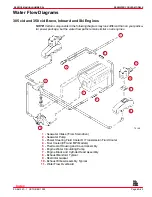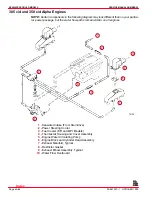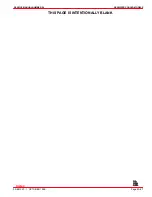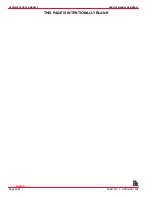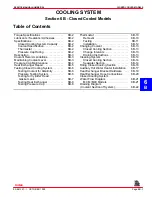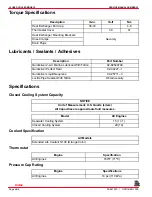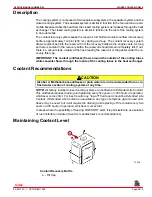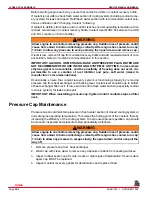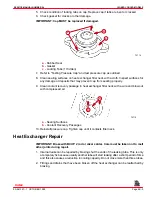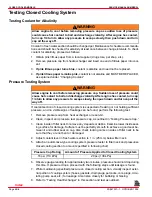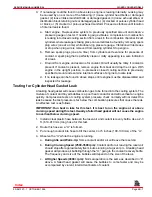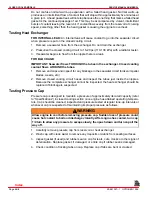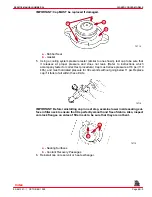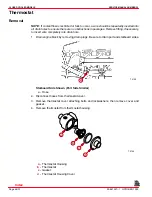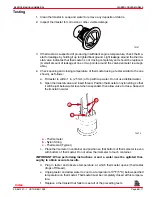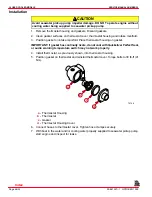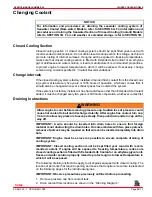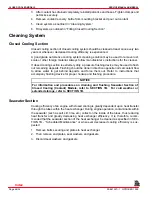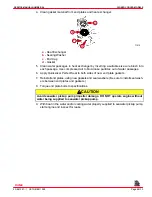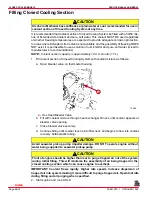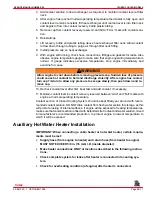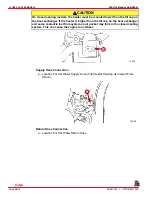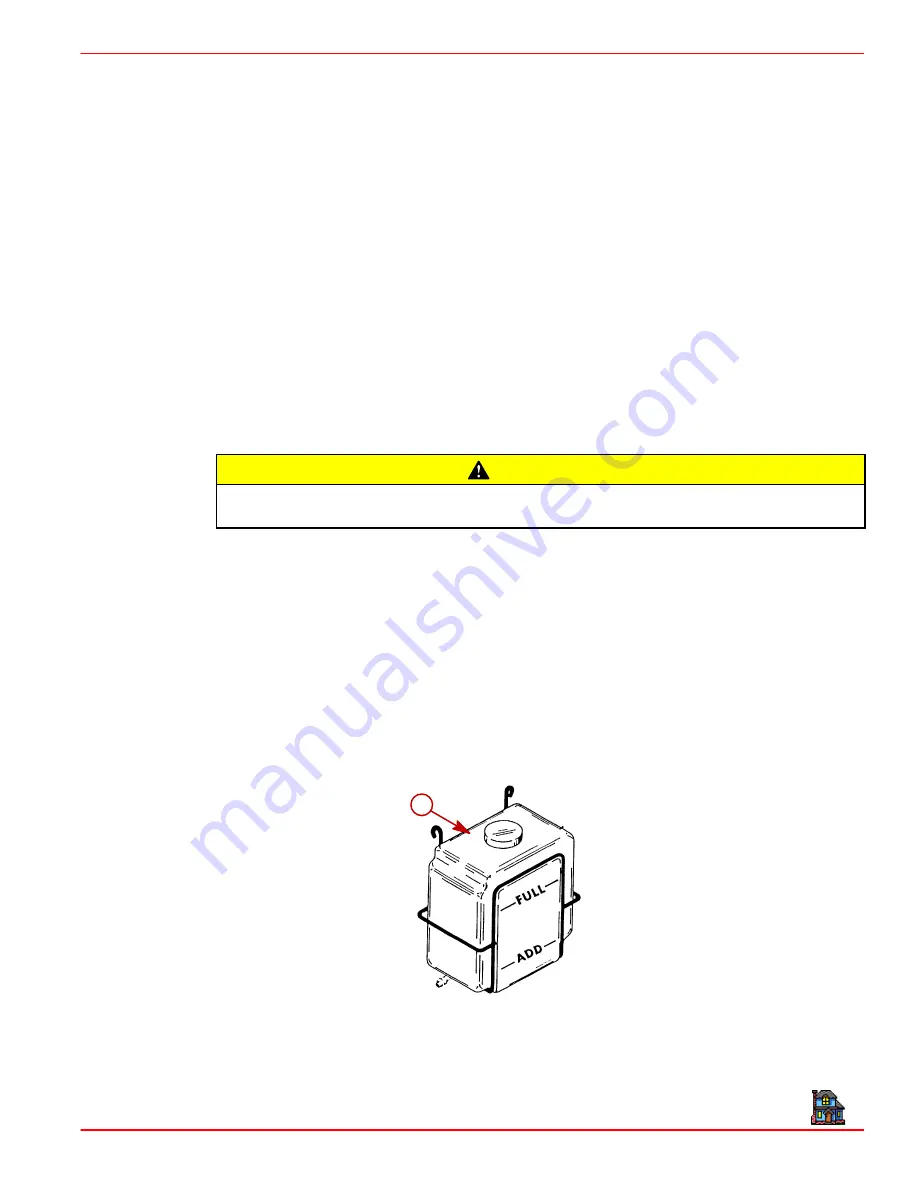
CLOSED COOLED MODELS
SERVICE MANUAL NUMBER 24
90-861327--1 OCTOBER 1999
Page 6B-3
Description
The cooling system is composed of two separate subsystems: the seawater system and the
closed cooling system. The seawater system is similar in function to the fan used in an auto-
mobile because it absorbs heat from the closed cooling system as it passes through the heat
exchanger. The closed cooling system is similar in function to the rest of the cooling system
in an automobile.
The coolant recovery system keeps the reservoir full. Normal coolant overflow into recovery
bottle is approximately 1/2 pint (230 mL) during warm-up. The coolant recovery system
draws coolant back into the reservoir from the recovery bottle as the engine cools. As long
as there is coolant in the recovery bottle, the reservoir should remain completely full. If not,
there is a vacuum leak, usually at the hose leaving the reservoir or the gasket under the re-
covery filler cap.
IMPORTANT: The coolant (antifreeze) flows around the outside of the cooling tubes
while seawater flows through the inside of the cooling tubes in the heat exchanger.
Coolant Recommendations
CAUTION
Alcohol or Methanol base antifreeze or plain water are not recommended for use in
fresh water section of cooling system at any time.
NOTE: All factory installed closed cooling systems come filled with Extended Life Coolant.
This antifreeze requires draining and replacing every five years or 1000 hours of operation,
whichever comes first. For best results any “top-off” fluid used should be Extended Life
Coolant. If Extended Life Coolant is unavailable, any type of ethylene glycol based anti-
freeze may be used, but it will require the draining and replacing of the coolant every two
years or 400 hours of operation, whichever comes first.
In areas where the possibility of freezing DOES NOT exist, it is permissible to use solution
of rust inhibitor and water (mixed to manufacturer’s recommendations).
Maintaining Coolant Level
72520
a
Coolant Recovery Bottle
a -
Fill Cap
Index

